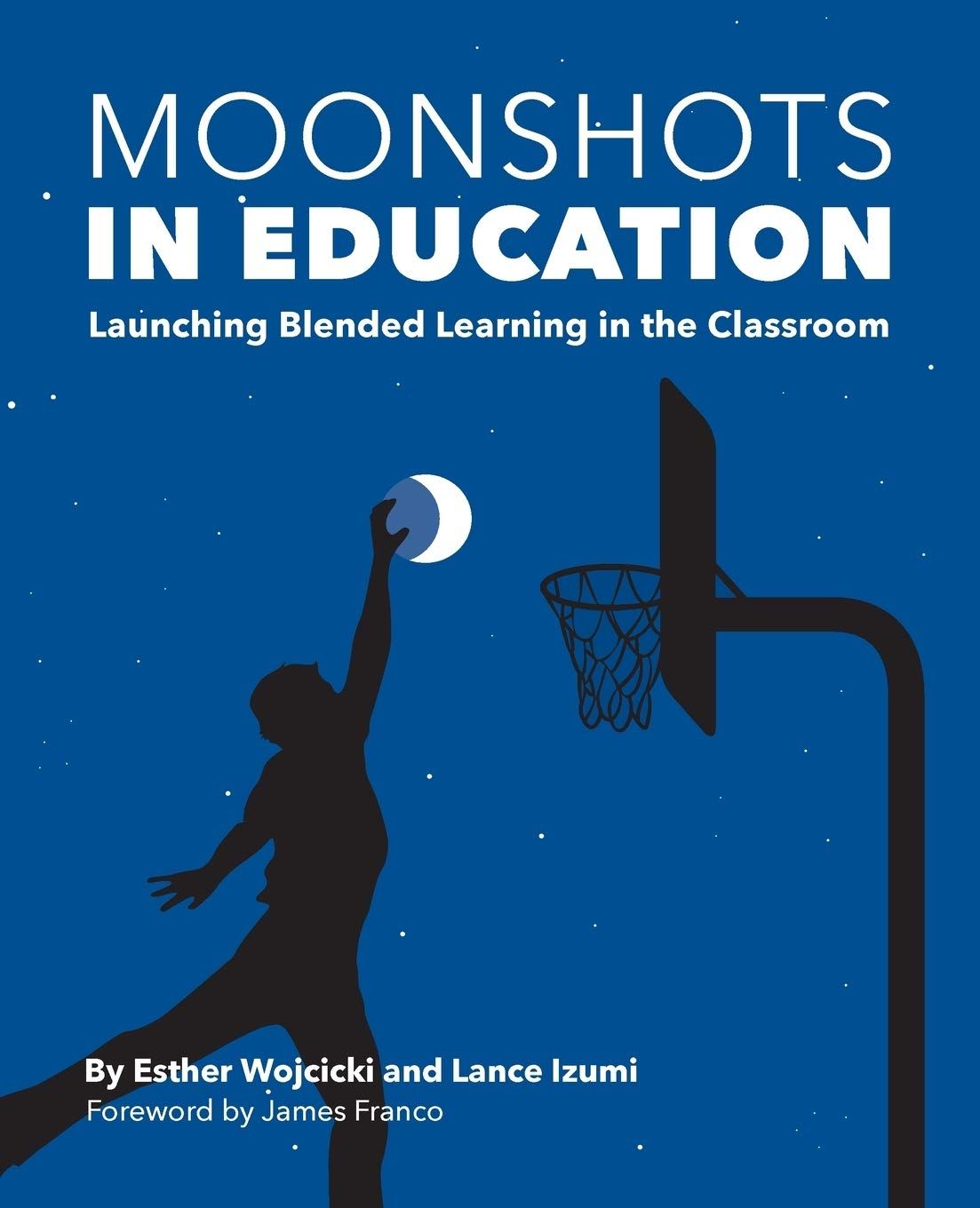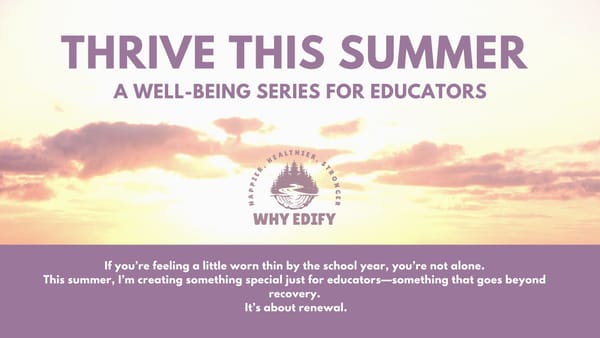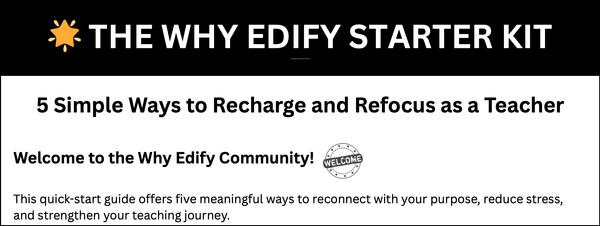Moonshots in Education - Book Summary and Golden Lines
Moonshots in Education was published in 2015. I was introduced to this book while attending an Innovative Schools Network Conference. While some of the references in the book may seem dated, there are concrete ideas worth implementing.

As an Amazon Associate, I earn from qualifying purchases. All affiliate links are marked with an asterisk (*). Thank You! Read more here.

The Book In Three Sentences
- Education has changed very little over the years.
- It’s time to change to a more student-directed model of instruction - think Guide on the Side.
- New technology can improve student learning experiences and outcomes.
Golden Lines (description and free resource) - These are some of my favorite lines from the book along with my reaction.
Moonshots in Education was published in 2015. I was introduced to this book while attending an Innovative Schools Network Conference. While some of the references in the book may seem dated, there are concrete ideas worth implementing. There are also examples of how teachers are incorporating blended learning in a variety of ways.
Blended learning is defined by Michael Horn of the Innosight Institute as “a formal education program in which a student learns at least in part through online delivery of content and instruction with some element of student control over time, place, path or pace, and at least in part at a supervised brick-and-mortar location away from home.
- Components of blended learning are prevalent in many classrooms. My students regularly use Khan Academy and Compass Learning. Some teachers run a flipped classroom while others may run a station rotation model. The authors do a nice job of showing different ways that blended learning can be incorporated.
In all too many districts today, teachers are scripted every day of the school year—told exactly what to teach and how—because the school boards don’t trust them. Then, to make sure teachers are doing their job, we test students repeatedly. No wonder the students are bored; no wonder we have 50 percent of teachers leaving after five years.
- This isn't true for me. I have plenty of freedom to design lessons to address the standards. I know this is the case for many other teachers. Some teacher friends of mine in other districts talk about how scripted their math instruction is. I would agree that it's challenging to stay engaged when opportunities for creativity are limited.
More than 70 percent of teachers today are using the traditional lecture model, the way people have been teaching for centuries. But today, they teach directly to the tests because test scores are tied to their evaluations. They may have computers, tablets, or even cell phones in the classroom, but having the devices alone does not change the culture. The worksheets may now be on a computer instead of on paper, but the culture remains the same: the teacher is in charge, the teacher is the director, and the teacher controls the learning.
- At times I am not a fan of the authors' tone. There is some truth in this quote, but I don't think a majority of teachers actually teach to the test. They do what they need to in order to set students up for success, but they also try to offer creative and engaging lessons whenever possible.
They need to find a way to change the culture of the classroom from a teacher-directed model to a student-directed model.
- I love this idea. It's beautiful when students drive their learning. I want kids to be curious and then have the skills to satisfy that curiosity. If they can do that it's like they have a gift that keeps on giving for a lifetime.
Students should be taught to search intelligently and understand the results of their searches. They should be taught how to differentiate between fact and opinion, how to tell who is the creator of a site, how to determine if the information is credible. Students need to know how to navigate the web, how to deal with bullying, how to be intelligent, responsible digital citizens. These are among the skills needed for lifelong learning.
- This is critically important to the future of our country. Technology has made it easier for anyone to publish their opinion. Students need to practice finding sources that can be trusted. We also need to invest in and protect sources that can be trusted.
Teachers who are willing to show that they are not perfect, don’t know everything, and can laugh at themselves can more easily develop trust.
- I think students appreciate this from their teachers. Mistakes are part of life. Whenever a teacher makes a mistake there is an opportunity to model learning from those mistakes. That's a superpower.
Swarthmore College psychology professor Barry Schwartz writes that his students seem to have shorter attention spans every year. But catering to these diminished attention spans is doing young students a disservice, Schwartz states, as maintaining attention is a skill that should be taught and reinforced, even in a culture where brevity is considered to be a highly attractive feature of online digital media—a presence that has become constant in our lives.
- Paying attention is a skill that needs to be practiced. Students that can sustain their attention even when tasks are difficult are set up for lifelong learning.
Simply put, students care about their work in our classes because they’re not publishing for their teachers. They’re publishing for a community of readers comprised of 2000 students and their families in print, and, many more on the Web and via social media.
- I've been thinking about this lately. How can the desire for a significant audience be leveraged to boost student engagement and understanding? Some ideas that come to mind are student web pages and social media accounts.
COMFORT WITH ‘CHAOS’ One of the biggest shifts in a blended-learning environment is often that students will be engaged in different activities and working on different concepts and skills. Teachers must learn to be comfortable facilitating learning in this environment and creating a culture that sets high academic expectations and encourages students to own their learning.
- When I try to "Guide from the Side" my classes are louder and more chaotic. It's hard for me to embrace, but in all honesty, the students don't mind. I think I worry that if someone would observe my classroom they would think my management is poor. The truth is that students need these opportunities to develop their self-directed learning behaviors. I'm learning to let some of my fears go and live with a little more chaos.
If you are looking to help students develop independence and embrace technology as a part of your practice then Moonshots in Education* is worth a read.

Moonshots in Education
Moonshots in Education explores digital and online learning in the classroom and what it takes to make a "moonshot." It gives several models and examples of schools that are already implementing digital learning and what the success rate has been.



